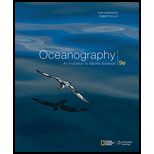
How the living things tend to become more complex with time (embryos grow to adults; populations evolve), but the second law of
tends to increase with time.
Answer to Problem 1TC
Living things are not excluded from the second law of thermodynamics; however, they can delay the process of disorganization, as the energy conversion in living things permits a transitory and local remission of the second law. The flow of energy in organisms results in increased order. Unlike lifeless things, organisms utilize the energy to function, maintain their extremely complex organization, and develop.
Explanation of Solution
Living things are not exempted from the second law of thermodynamics, but they can procrastinate that unavoidable descent into disorganization because the conversion of energy in living things permits a transitory and local remission of the second law.
Living organisms are bodies where the flow of energy results in increased order—that is, areas of great complexity and low entropy. The car engine functions only by the use of energy obtained in petroleum. Thus, organisms use the energy obtained from food to function, to develop, and to maintain their extremely complex organization. The car and computer will not fix themselves; however, human beings and fish do. This sophisticated use of energy is a basic quality of organisms.
Almost all the energy required by the marine organisms to function come directly or indirectly from the sun. The solar energy is trapped by the presence of chlorophyll in organisms called “primary producers” (certain bacteria, green plants, and algae) and thus, it is converted into chemical energy. The chemical energy is used to build simple carbohydrates and other organic molecules (food), which is then used by the primary producers or eaten by animals (or other organisms) called consumers. This process is called photosynthesis as the light energy is used to synthesize molecules rich in stored energy.
Photosynthesis appears to be the principal process of binding energy into carbohydrates on the Earth; however, there is another process termed ‘Chemosynthesis’. Some species of archaea and bacteria employ chemosynthetic process. Chemosynthesis is the process of biological conversion of simple carbon molecules (usually methane or carbon dioxide) into carbohydrate using the oxidation of inorganic molecules (such as methane or hydrogen sulfide or hydrogen gas or) as a source of energy. No sunlight is required in this process. Chemosynthetic activity predominates in the deep ocean floor, mainly at the hydrothermal vents at spreading centers.
Want to see more full solutions like this?
Chapter 13 Solutions
Oceanography: An Invitation To Marine Science, Loose-leaf Versin
 Applications and Investigations in Earth Science ...Earth ScienceISBN:9780134746241Author:Edward J. Tarbuck, Frederick K. Lutgens, Dennis G. TasaPublisher:PEARSON
Applications and Investigations in Earth Science ...Earth ScienceISBN:9780134746241Author:Edward J. Tarbuck, Frederick K. Lutgens, Dennis G. TasaPublisher:PEARSON Exercises for Weather & Climate (9th Edition)Earth ScienceISBN:9780134041360Author:Greg CarbonePublisher:PEARSON
Exercises for Weather & Climate (9th Edition)Earth ScienceISBN:9780134041360Author:Greg CarbonePublisher:PEARSON Environmental ScienceEarth ScienceISBN:9781260153125Author:William P Cunningham Prof., Mary Ann Cunningham ProfessorPublisher:McGraw-Hill Education
Environmental ScienceEarth ScienceISBN:9781260153125Author:William P Cunningham Prof., Mary Ann Cunningham ProfessorPublisher:McGraw-Hill Education Earth Science (15th Edition)Earth ScienceISBN:9780134543536Author:Edward J. Tarbuck, Frederick K. Lutgens, Dennis G. TasaPublisher:PEARSON
Earth Science (15th Edition)Earth ScienceISBN:9780134543536Author:Edward J. Tarbuck, Frederick K. Lutgens, Dennis G. TasaPublisher:PEARSON Environmental Science (MindTap Course List)Earth ScienceISBN:9781337569613Author:G. Tyler Miller, Scott SpoolmanPublisher:Cengage Learning
Environmental Science (MindTap Course List)Earth ScienceISBN:9781337569613Author:G. Tyler Miller, Scott SpoolmanPublisher:Cengage Learning Physical GeologyEarth ScienceISBN:9781259916823Author:Plummer, Charles C., CARLSON, Diane H., Hammersley, LisaPublisher:Mcgraw-hill Education,
Physical GeologyEarth ScienceISBN:9781259916823Author:Plummer, Charles C., CARLSON, Diane H., Hammersley, LisaPublisher:Mcgraw-hill Education,





